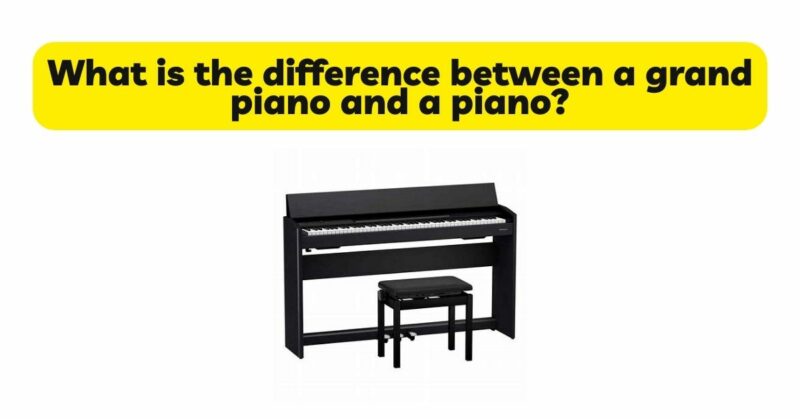When it comes to pianos, two primary types dominate the musical landscape: the grand piano and the upright piano. While both instruments share a common purpose – producing beautiful music – they differ significantly in terms of design, sound, size, and performance characteristics. In this article, we will delve into the distinctions between grand pianos and upright pianos, exploring their structural differences, tonal characteristics, playing experience, size considerations, and suitability for various settings. By understanding these differences, aspiring pianists and enthusiasts can make informed choices when selecting the ideal piano that suits their musical needs and preferences.
- Structural Differences: The most apparent distinction between a grand piano and an upright piano lies in their physical structure. A grand piano features a horizontal design, with the strings and soundboard positioned horizontally, parallel to the ground. In contrast, an upright piano stands vertically, with the strings and soundboard oriented vertically behind the keys. This structural difference has a significant impact on various aspects of the instrument’s performance, including tone, resonance, and touch response.
- Tonal Characteristics: The structural differences between grand pianos and upright pianos result in variations in tonal characteristics. Grand pianos are renowned for their rich, full-bodied sound and expansive dynamic range. The horizontal string layout allows for longer strings and larger soundboards, facilitating the production of a more resonant and nuanced tone. On the other hand, upright pianos have a more compact design, leading to a slightly more focused and compact sound. While upright pianos may not possess the same level of tonal depth and dynamic range as grand pianos, they offer their unique charm and character.
- Playing Experience: The playing experience on a grand piano differs from that of an upright piano due to the physical layout and design. Grand pianos typically offer a more responsive and sensitive touch, allowing pianists to achieve a greater level of control and expressiveness. The horizontal string placement in grand pianos contributes to a more even key response across the keyboard, facilitating consistent touch and feel. Upright pianos, with their vertical string arrangement, may require slightly more finger strength to produce the same level of expressiveness, but they still provide a satisfying playing experience suitable for a wide range of musical styles and skill levels.
- Size Considerations: Size is a significant factor to consider when comparing grand pianos and upright pianos. Grand pianos come in various sizes, ranging from concert grands (over 9 feet long) to baby grands (around 5 feet long). The size of a grand piano affects its tonal projection, resonance, and dynamic capabilities. Upright pianos, on the other hand, have a more compact vertical design, making them a space-saving option for smaller rooms or homes. They come in different heights, such as studio uprights, console pianos, and spinets, offering options to fit various space constraints.
- Performance Settings: The choice between a grand piano and an upright piano often depends on the performance setting and the specific musical requirements. Grand pianos are the preferred choice for concert halls, recording studios, and large venues due to their powerful sound projection, rich tonal qualities, and expressive capabilities. They are designed to deliver exceptional performance and accommodate the demands of professional pianists. Upright pianos, on the other hand, are versatile instruments suitable for a wide range of settings, including homes, practice studios, schools, and small venues. Their compact size and more modest tonal output make them well-suited for intimate performances and everyday practice sessions.
- Cost Considerations: Cost is an essential aspect to consider when comparing grand pianos and upright pianos. Generally, grand pianos tend to be more expensive than upright pianos due to their larger size, intricate construction, and higher-quality materials. The size and complexity of a grand piano contribute to the higher production costs involved. Upright pianos offer a more affordable alternative without compromising on quality, making them a popular choice for beginner pianists, students, and those with budget constraints.
Conclusion: The differences between grand pianos and upright pianos extend beyond their physical structure and tonal characteristics. Grand pianos offer an unrivaled level of tonal depth, dynamic range, and playing experience, making them the instrument of choice for professionals and prestigious performance settings. On the other hand, upright pianos provide a more compact and affordable option without sacrificing quality, making them ideal for homes, practice spaces, and smaller venues. When selecting between a grand piano and an upright piano, considering factors such as tonal preferences, available space, budget, and musical aspirations is crucial. Ultimately, the choice between these two magnificent instruments depends on individual preferences, musical goals, and the desired balance between performance capabilities and practical considerations.


